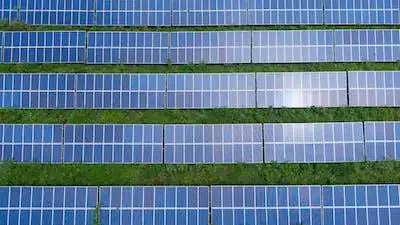Low-Maintenance Marvels:
The good news is that solar panels are low-maintenance wonders. Unlike machinery with moving parts, they require minimal upkeep. Their durable tempered glass construction can withstand harsh weather conditions like hail and strong winds. However, proactive maintenance ensures peak efficiency and catches potential issues early.
Cleaning for Peak Performance:
While rain naturally washes away some debris, a good cleaning every two to four times a year is recommended, especially in areas with heavy snowfall or pollution. Remember, even a thin layer of grime can significantly reduce energy production.
Safety First: Never climb onto your roof to clean the panels yourself. Hire a professional cleaning service trained in safe rooftop work and familiar with solar panel specifics.
Soft Touch: Avoid harsh chemicals or abrasive scrubbers. Use a gentle garden hose with lukewarm water and a soft-bristled brush designed for solar panels. Rinse thoroughly and let the panels air dry.
Monitoring Matters:
Keeping an eye on your system's performance is crucial for maximizing energy output and identifying potential problems. Most solar installations come equipped with monitoring systems that track your system's real-time and historical data. This information is usually accessible through a mobile app or online portal.
Key Metrics to Track:
Energy Production: Monitor your daily, weekly, and monthly energy output. Compare it to expected production based on your system size and location. Significant deviations could indicate panel underperformance or inverter issues.
System Efficiency: Track the percentage of sunlight converted into electricity by your system. A sudden drop in efficiency could point to panel shading, wiring problems, or inverter malfunction.
Alerts and Alarms: Most monitoring systems send alerts for potential issues like inverter faults, high temperatures, or ground faults. Promptly address these alerts to prevent further damage.
Beyond the Basics:
While regular cleaning and monitoring are essential, consider these additional maintenance steps for optimal system health:
Visual Inspection: Twice a year, visually inspect your panels for cracks, chips, or discoloration. Look for signs of animal nesting or loose mounting hardware.
Checking Connections: Regularly check electrical connections for signs of corrosion or loose wires. Tighten any loose connections and call a qualified electrician for repairs if needed.
Trimming Trees: Overhanging branches can shade your panels, reducing their output. Prune nearby trees strategically to maintain optimal sunlight exposure.
Investing in Professional Help:
For comprehensive maintenance and troubleshooting, schedule an annual inspection with a qualified solar technician. They can perform a thorough assessment of your system, including:
Panel performance testing: Using specialized tools, technicians can identify underperforming panels or faulty connections.
Inverter health check: They'll ensure your inverter is functioning correctly and efficiently.
Roof integrity inspection: They'll check for any damage to your roof that could affect your system's stability.
Remember, regular maintenance and professional inspections not only optimize your solar system's performance but also extend its lifespan, maximizing your return on investment and your contribution to a sustainable future.
Additional Tips:
Get to know your system: Familiarize yourself with your specific solar panel and inverter models. Understanding their operating parameters will help you interpret monitoring data and identify potential issues.
Utilize smart features: Many newer solar systems offer smart features like panel-level monitoring and automated cleaning robots. Consider investing in these technologies for added convenience and performance optimization.
Join the solar community: Connect with other solar homeowners in your area or online forums. Sharing experiences and tips can be a valuable resource for maintaining your system and navigating any challenges you encounter.
By following these tips and maintaining a proactive approach, you can ensure your solar roof system becomes a shining example of sustainable energy generation, powering your home and contributing to a brighter future for generations to come.
Remember: Safety is paramount when dealing with your solar system. Always err on the side of caution and seek professional help for any tasks beyond your comfort level or expertise. With proper care and monitoring, your solar roof system will reward you with clean, reliable energy for years to come.
I hope this comprehensive guide empowers you to confidently maintain and monitor your solar roof system, reaping the full benefits of your investment in sun-powered living.

